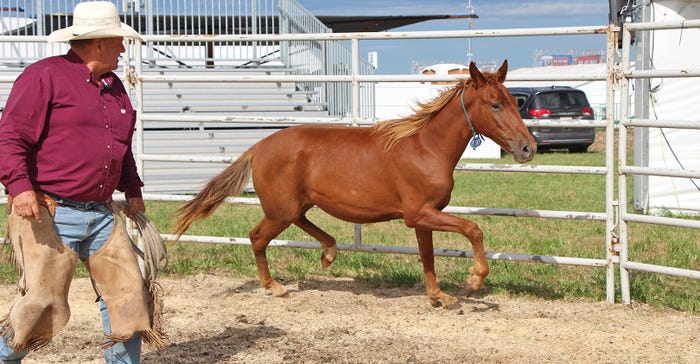
TRUST ESTABLISHED: It took just under 30 minutes from the time the wild colt jumped off the trailer until the horse gentler could approach. “The goal,” Ron Knodel told a group gathered at Husker Harvest Days, “is to get this animal to where it will work with you and for you in your operation. It just takes time and patience. It has to be a good experience for horse and handler.”
The chestnut colt leaped off the stock trailer, ran to the far side of the corral and then back toward the trailer. Cutting from side to side, it desperately tried to find its way back inside the trailer, but the door was closed.
Realizing there was no way out, the young colt began circling the corral, staying close to the rail. He was trying to avoid the man in the burgundy shirt, cowboy hat and chaps standing in the center of the pen.
With a wound lasso rope clutched in his hand, Ron Knodel stood still. Then slowly, he began to move in sync with the horse. “I’m trying to catch his eye,” Knodel says. But the animal was flighty.
The brand on the colt explained its uneasiness. To mark a horse or burro as a wild horse managed on federally protected land, the Bureau of Land Management uses “freeze branding.” The BLM manages and protects wild horses and burros on 26.9 million acres of public lands across 10 Western states.
To manage the population in sync with available pastureland, the BLM places animals in private care. Since 1971, more than 240,000 wild horses and burros were adopted by individuals, many of whom are ranchers. This was such a horse.
With each lap around the pen, the colt eased its pace until it stood still. Then the Nebraska horse gentler began to work.
Click through the slideshow to see and read more about Ron Knodel’s wild horse gentling process.
About the Author(s)
You May Also Like






